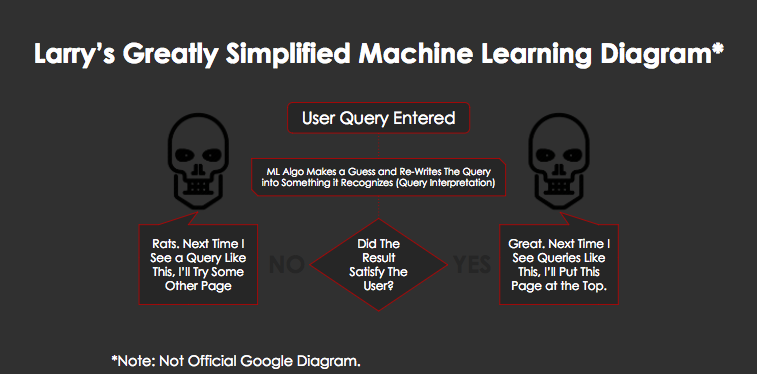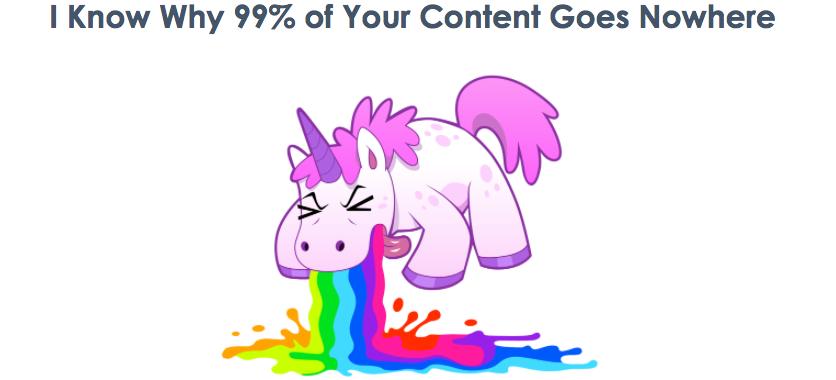- Share Content Marketing Moneyball—The Secret Strategy to Data-Driven Content Success on Facebook
- Share Content Marketing Moneyball—The Secret Strategy to Data-Driven Content Success on Twitter
- Share Content Marketing Moneyball—The Secret Strategy to Data-Driven Content Success on Linkedin
- Share Content Marketing Moneyball—The Secret Strategy to Data-Driven Content Success via email
There’s an epidemic failure within marketing to understand what defines quality content. Without a sound definition for quality content, it’s impossible to develop an effective content marketing strategy. Unfortunately, there are many misconceptions on what defines quality content. For example:
- A piece of content’s quality is determined by the creator, or
- Quality content is content with a great headline, several images, easy-to-read, actionable, and other other specific attributes.
Once upon a time, we tried to define what makes content great at WordStream, my former company. We fell into the same trap as above, trying to define quality content based on attributes. We said great content is:
- Findable
- Shareable
- Usable
- Readable
- Memorable
- Quotable
- Actionable
- Reportable
All of these are important. But even if your content has all eight of those attributes, it still is most likely to go nowhere.
The definition of quality content should be based on outcomes, not biased views of your own work. Here’s one way to think about quality content that might put things in perspective.
What is “Quality Content”?
In the based-on-a-true-story movie Moneyball, baseball team manager Billy Beane, played by Brad Pitt, finds himself in a frustrating meeting where his scouts are talking about potential free agents to add to the team lineup. The scouts evaluate players based on their athleticism, size, and speed. They also speak glowingly about one player because he’s clean cut, has a good face, and a good jaw. Beane asks his scouts an important question: “Can he hit?“
Many marketers look at content the same way the scouts were looking at the players. We’ve been trying to define content quality as a series of technical and aesthetic attributes: how our content is structured and formatted. How many times have you heard that long form is better than short form or vice versa?
Individuals, businesses, and brands are producing a ridiculously enormous amount of content every minute. But few are actually successful. If your content doesn’t succeed, does it matter if it included lots of pretty images, had perfect spelling and grammar, or used x number of words?
No.
Great baseball players come in all shapes and sizes. The same is true of quality content.
Quality content is successful content. Quality content achieves a goal. I.e., it drives traffic, Google search rankings, engagement, and/or conversions.
Performance is what matters for any content marketing strategy. Here’s how to create home run content for your marketing team.
Increase Your Chances of Picking the Right Topic
Anyone with a creative bone in their body will argue that content marketing strategy isn’t just about numbers. Creativity is art, after all.
The argument goes something along the lines of: “If content creation were just a science, then anybody could simply create quality content. Experience matters! Intuition matters! There are just certain intangibles that only creative content people can understand.”
Time to drop a truth bomb: No content marketer has a crystal ball. Nobody can look at a piece of content and predict its future any more accurately than I can.
You can’t say with 100 percent certainty, even if it is based on past experience, that a piece of content will succeed in the future. I’m always surprised when an article I worked really hard on goes nowhere and an article I didn’t spend much time on becomes a huge success.
You Can’t Find Unicorns Without Producing Lots of Donkeys

You can’t predict success. Another common misconception is that you can somehow convert increased effort or time on one piece of content into increased units of quality.
You have to produce and audition lots of ideas to find your next quality idea. Then you have to fully explore that topic once it has revealed itself. Here’s how to do that. Consider these factors when determining what content topics to invest your time in:
- Past unicorn content: What topics have performed well in the past?
- Topics your audience cares about: What’s your audience talking about on social?
- Topics you want to rank for: What keywords are you currently targeting?
Once you decide on a topic, create the content. Measure the results to determine if your content was a quality piece and react accordingly. Take the following steps to get closer to creating more unicorn content.
- Produce and Audition Lots of Content: Content is a lot about throwing things at a wall and seeing what sticks. Consider past performance of similar topics in conjunction with the goals you have for this piece of content.
- Measure User Engagement Rates: After publishing, measure engagement rates for your content. Use time and rate benchmarks to determine if it’s working.
- Kill the Donkeys: If a piece of content isn’t performing, abandon ship. No use in continuing to promote something no one cares about.
- Find the Unicorns and Sound the Unicorn Alert! If content is performing well, start promoting and maximizing your return—more on that later.
How do You Know if It’s Quality Content?
Everyone wants to create successful content. But what actually makes content successful?
User engagement rates.

Think about the systems that drive exposure and clicks to your content. Social media news feeds, search and social ads, and organic search listings. These systems all increasingly employ new machine learning based algorithms that reward higher engagement rates (such as click through rates and dwell time) with far greater exposure.
Perform an audit of your existing content based on engagement rates such as dwell time, conversion rates, click through rates, or traffic. (Read Curata’s comprehensive content audit guide for how to do this.) Look for the outliers—the content that does not just a little bit better, but three to five times better. Those are your unicorn content campaigns with unusually high user engagement. They are the types of content most likely to earn the approval of our algorithmic overlords.
Your Unicorn content (content with unusually high user engagement rates) tends to:
- Rank well in Google Search
- Convert significantly better than donkey content
- Drives tons of organic social media engagement
- Does fantastically well in paid search
- Does fantastically well in paid social media ads

Again, the relationship here isn’t coincidental. It’s because the Facebook Newsfeed algorithm, Relevancy Score in Facebook Ads, Quality Score in Google AdWords, and RankBrain for Organic Search, all use machine learning algorithms. They dramatically reward content boasting high user engagement with tremendous visibility and clicks within their platform.
You Found Quality Content: Now What?
Promoting a donkey won’t turn it into a unicorn. You’ll only waste time and money. Instead, focus all your efforts on promoting your powerful and valuable unicorns. When you find your unicorns, promote them on every channel to amplify their impact by 100 times or even 1,000 times and drive even more traffic, engagement, and leads.
Once you’ve found content that fits into all these categories, it’s time to start implementing a promotion strategy. The following tactics will help you leverage maximum value from your unicorn content:
- Repurpose it into other types of content: webinar, infographic, etc.
- Schedule it for a refresh
- Pitch similar content with backlinks to other websites
- Put some paid social behind it
- Ask for influencer quotes to add in
- Make it into an eBook
Content Marketing is About Output, not Input!
Content marketing strategy is an unfair game. If you want to win you need to stop relying on your gut. Your gut is really just your opinion and, by nature, biased. To really succeed, you need to look at unbiased statistics.
Stop looking at content attributes. Start looking at data to find your truly high-quality content. Start optimizing for engagement and you’ll find huge content wins.
When you find that super rare unicorn content, capitalize on it! Leverage the heck out of it on every channel to maximize your marketing ROI. And to create your own documented content marketing strategy, download Curata’s Content Marketing Pyramid: A Framework to Develop & Execute Your Content Marketing Strategy eBook.












